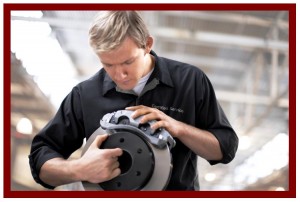
Independents say they are being squeezed out of auto repair as electronics proliferate. Automakers want to recapture the work.
The average length of vehicle ownership that were purchased as new has risen to a record 71.4 months, or nearly six years, according to the latest Polk registration data. Consumers who purchased used vehicles held them nearly 49.9 months. Combined, new and used vehicle owners are holding on to their vehicles for an average 57 months.
The length of vehicle ownership among U.S. consumers has increased 23% since the third quarter of 2008 in the waning years of the Bush Administration when the Great Recession was in full swing and the global financial markets were collapsing.
This is not good news for automakers as earlier Polk data show that new vehicle owners exhibit lower brand loyalty as they retain their cars or trucks longer.
A number of factors contribute to the increased length of ownership, according to Polk, which analyzed vehicle registration data through Sept. 2011:
- First, consumer spending remains conservative in a still-weak job market with relatively high unemployment rates, long-term rates not seen since the Great Depression.
- Second, many buyers have longer-term financing options to secure more affordable payments, but ultimately more expensive total cost.
- Third, vehicles produced in recent years have been more durable and more reliable than their predecessors have been. Automakers are also offering longer warranties for new vehicles and used vehicles, reducing the risk for consumers who want to keep vehicles longer.
Polk’s latest findings, coupled with the increased average age of vehicles on the road, which now stands at 10.8 years for cars and light trucks combined, means a healthy automotive aftermarket. About $295 billion spent annually in auto repair products and services. Unfortunately, for automakers, the repair and service business here is dominated by independent parts makers and repair shops.
Dealerships used to thrive on automaker-paid warranty repairs, paid for by the factory at reduced labor rates. In order to compensate technicians for this factory-dictated lower rate, dealers charged higher rates for non-warranty auto parts and repairs. In effect, car owners were subsidizing the cost of poor quality at automakers if they went to a factory store for auto repairs, a condition not unnoticed by vehicle owners. One recent survey put costs on average at 34% more at dealerships compared with independent shops.
Moreover, Polk says it does not think that new vehicle sales will reach pre-downturn levels of 16 million units until 2015. Polk also thinks the lengthy ownership trend will continue in what remains a sluggish economy.
| Average Length Ownership U.S. Households | |||
| Quarter | New | Used | Total |
| Q1 2003 | 49.8 | 32.2 | 38.0 |
| Q3 2003 | 50.2 | 33.1 | 38.7 |
| Q1 2004 | 50.0 | 33.6 | 39.3 |
| Q3 2004 | 51.6 | 35.3 | 40.9 |
| Q1 2005 | 52.0 | 35.9 | 41.4 |
| Q3 2005 | 52.8 | 37.2 | 42.4 |
| Q1 2006 | 52.1 | 37.7 | 42.5 |
| Q3 2006 | 53.5 | 38.7 | 43.7 |
| Q1 2007 | 53.1 | 38.4 | 43.4 |
| Q3 2007 | 54.8 | 40.1 | 45.1 |
| Q1 2008 | 54.6 | 40.0 | 45.0 |
| Q3 2008 | 56.3 | 41.3 | 46.3 |
| Q1 2009 | 58.6 | 43.7 | 48.9 |
| Q3 2009 | 60.6 | 44.2 | 49.9 |
| Q1 2010 | 63.2 | 45.9 | 51.8 |
| Q3 2010 | 65.3 | 46.9 | 53.1 |
| Q1 2011 | 66.7 | 47.5 | 53.9 |
| Q3 2011 | 71.4 | 49.9 | 57.0 |
| Source: Polk, in Months | |||
See also:

